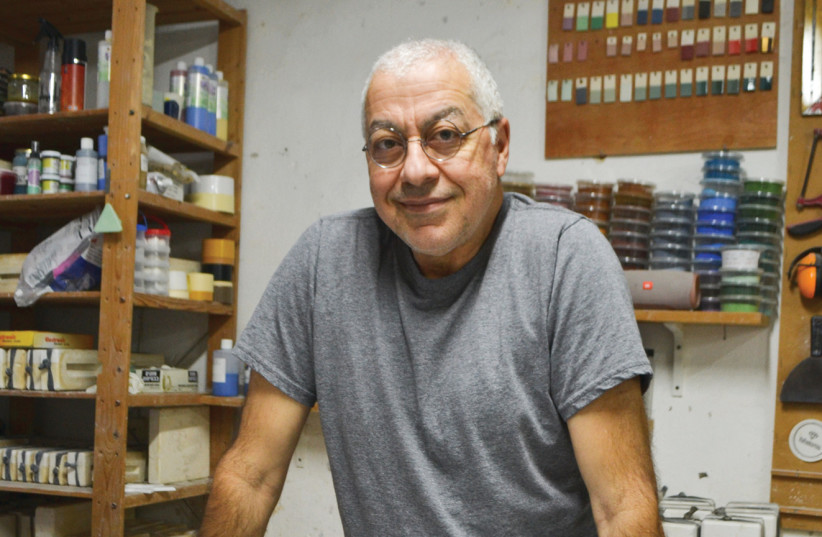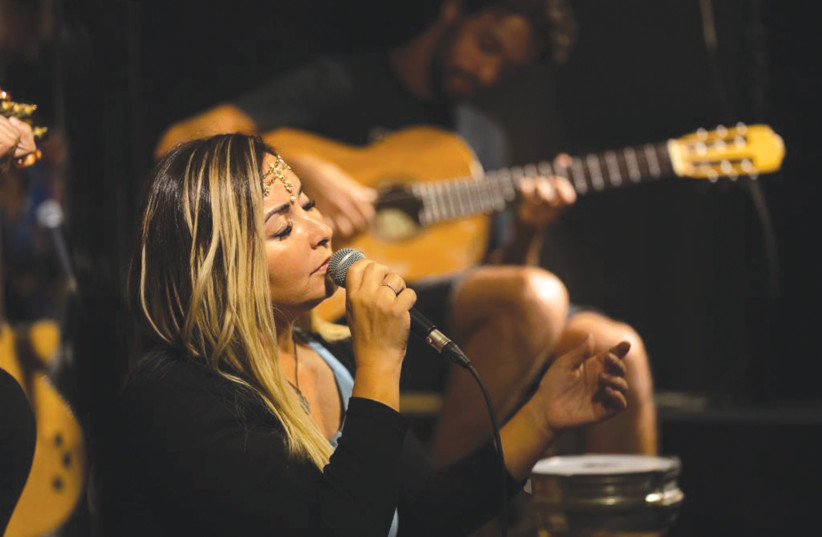In between the graffiti-covered walls, behind the nondescript doors of an old Jaffa building, Benny Cohen discovered the place that saved him – a high-ceilinged ceramic studio, its floors covered with white dust.
Cohen, 59, by day the manager of the Sderot Cinematheque, is also an artist who sculpts in ceramics and iron. In the yard of his home in Sderot, he built his own studio.
But following October 7, after hours spent in the safe room with his wife and adult sons, not knowing what was going on, they made a blind run for it. They loaded their car and fled to relatives in the center of the country, before finding themselves in an evacuees’ hotel in Tel Aviv.
The first month, he says, he was mostly traumatized. “We went from funeral to funeral. I couldn’t do anything. I tried to fight myself, but looking back on it, this was a mistake.” When he began to “awaken,” Cohen says, he started walking around Tel Aviv. “I would go into production houses and ask if I could look around; I began to make friends.”
And thus, he found a studio that opened its doors to him.

“I made a few sculptures about what happened – icons of anger and rage and destruction,” he explains. “But it was too difficult and I went back to doing things that were simpler. I realized I needed to give myself time, to analyze. So now I’m doing things that are gentler. I’m answering a lot of questions about this thing we experienced, in this creativity that I express. This saved me.”
Dealing with trauma through art
Dealing with the trauma through artistic expression – it’s a refrain that is heard over and over when speaking with artists from the Gaza border area.
Hagit Haviva Ohayon, 44, is an emotional and behavioral counselor, a single mother, and a singer from Sderot, whose debut album is in post-production. During the attacks, she and her two daughters were rescued by her father from their safe room. They have been staying at what she describes as the “hotel of the prisoners” in Tel Aviv, in between whose “walls” she now lives, in whose lobby she now sits.
“People think they understand, but strangers won’t understand it,” she says. One of the challenges that Ohayon sees ahead is refusing to go back to business as usual. “Even now, people are going back home because they want to show that everything is okay. They don’t understand that it’s distorted. Everything is not okay; this is a lie.”
The first month was mostly spent in her hotel room, Ohayon says, but now “the voices are coming out” and she is writing and singing whenever she can – in the hotel to others who fled their homes, and at musical evenings for evacuees. She is also one of the organizers of Sderot’s well-known Shofoni, an open stage for up-and-coming singers whose schedule was cut short by the attacks and resumed in November with a special evening in Tel Aviv.
"This time at Shofoni almost everyone needed to get it out,” says Tamar Sara Capsouto (Shara), 43, a South-based singer who has released four albums. “It was like a shiva; we had to grieve together.” On the day of the attacks, she was at her home in Kibbutz Mefalsim, and after hours in the safe room listening to the shooting outdoors, fled with her partner.
“ I dreamt that they kidnapped me, they got past the gate and were shooting. And when it happened, I was like, ‘Okay, it’s happening, okay.’”

Since her time as what she describes as “a refugee in my own country,” Capsouto has also been thinking about her place as an artist. “I look from the side and I see that people connect to music,” but she also notes that people have their own pace to deal with trauma, and many aren’t ready yet. Capsouto has been attending a lot of the concerts for evacuees and realizes that she is also still digesting what she experienced. “I come, hear one song, cry, and leave.”
Contrasts of calm and rage, fear and safety, suppression and expression are some of the subjects that come up when speaking with artists from the South. There are also the bold oil colors of the landscape paintings of Haran Kislev, 38, a Kibbutz Be’eri native, which stand in contrast to the seemingly tranquil nature scenes on which they are based.
Those of his paintings that aren’t showing at his current exhibition at the Mishkan Museum of Art at Ein Harod, are scattered around the small room serving as his temporary studio in south Tel Aviv. The smell of oil paint hangs in the air and Kislev gestures to his paintings as he talks. “When you look at the landscape of the border, you don’t see the danger – it’s something you feel,” he says. “I was always looking for the way to present this thing, this same landscape as it really feels, and not as it actually appears.”
“Since I came out, I haven’t stopped painting. And in some subconscious place, even though I got out of there physically, when I stand in front of the canvas and paint, it’s like my studio is the safe room.”
